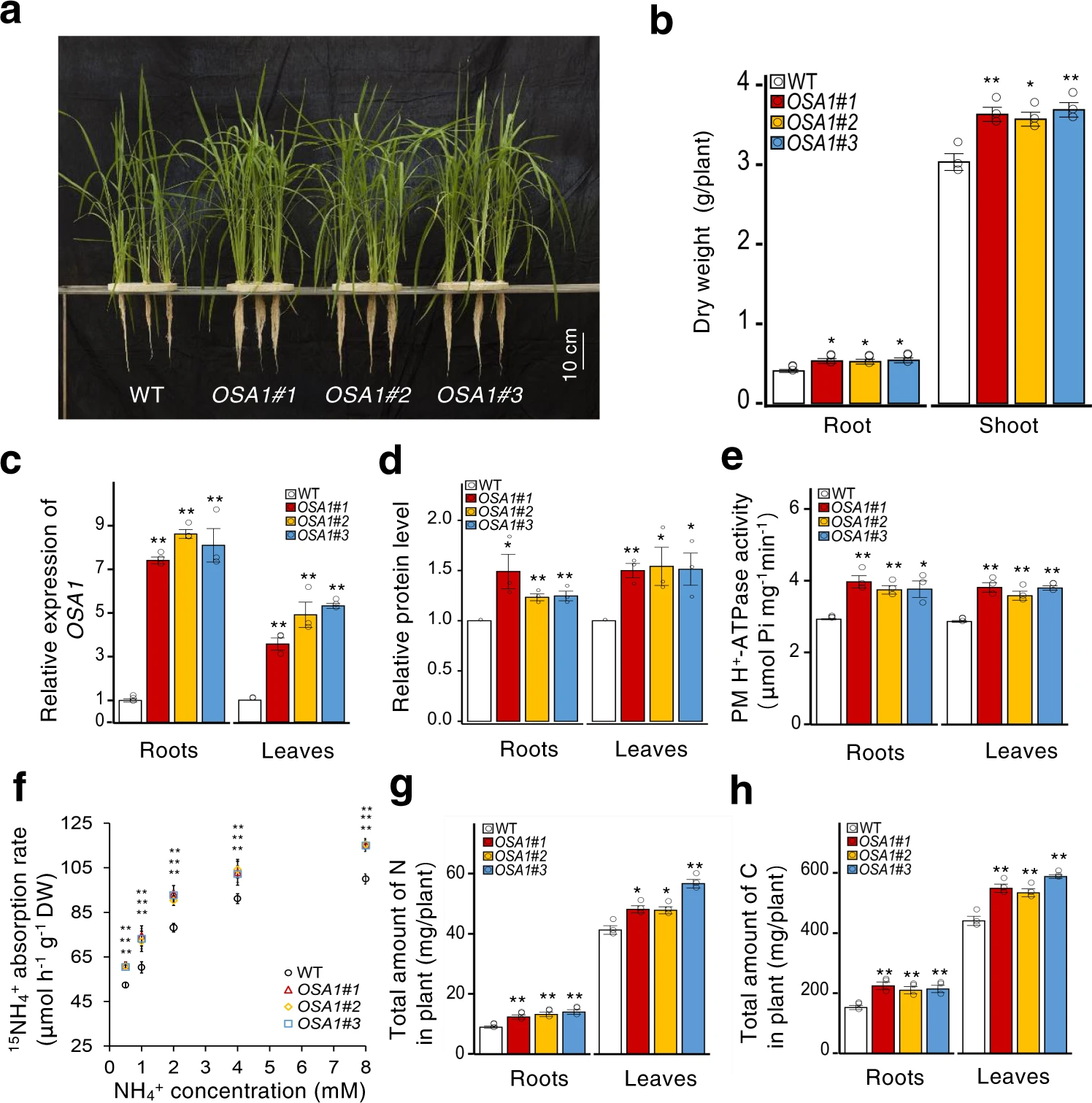
名古屋大学:イネの収量を30%以上増加:遺伝子(細胞膜プロトンポンプ)(動画):
Nagoya Univ: Rice yield by 30% : Gene (cell membrane proton pump):
名古屋大学:水稻增产30%或更多:基因(细胞膜质子泵)
~食糧増産と二酸化炭素や肥料の削減に期待~
名古屋大学:トランスフォーマティブ生命分子研 究所(WPI-ITbM※)
木下 俊則 教授:
ヂャン・マオシン 研究員:
南京農業大学ヂゥー・イーヨン教授:
イネの1つ の遺伝子(細胞膜プロトンポンプ)を増加させることで、
根における養分吸収と気孔開口を、同時に高める技術を開発しました。
野外水田でのイネの収量を 、30%以上 増加させることに成功しました。
細胞膜プロトンポンプの役割:
これまでの研究により、根における養分吸収と気孔開口に おいて、細胞膜プロトンポンプが共通して重要な役割を果たすことが明らかとなっ てきました。
イネの収量が30%増加:
1つの細胞膜プロトンポンプ遺伝子の発現を高めた過剰発現イ ネを作出したところ、
- 根における
- 窒素養分吸収が 20%以上、
- 光合成活性が 25% 以上高まりました。
4ヶ所で収量評価試験:
4ヶ所の異なった野外の隔離水田圃場における収量評価試験に おいてイネの収量が 30%以上増加することが明らかとなりました。
本研究成果は、 根における養分吸収と気孔開口を同時に高める画期的な技術であり、様々な実用作 物での応用が期待されます。
本研究成果:
2021 年 2 月 2 日(英国時間)に英国科学誌「Nature Communications」 でオンライン公開されました。
本研究:
科学技術振興機構(JST)ALCA [JPMJAL1011]、科学研究費補助金・基 盤研究(S) [20H05687]、学術変革領域研究(A) [20H05910]の支援のもとで行われたもの。
http://www.nagoya-u.ac.jp/about-nu/public-relations/researchinfo/upload_images/20210203_itbm1.pdf
Plasma membrane H+-ATPase overexpression increases rice yield via simultaneous enhancement of nutrient uptake and photosynthesis
Article
Open Access
Published: 02 February 2021Abstract
Nitrogen (N) and carbon (C) are essential elements for plant growth and crop yield.
Thus, improved N and C utilisation contributes to agricultural productivity and reduces the need for fertilisation.
In the present study, we find that
overexpression of a single rice gene, Oryza sativa plasma membrane (PM) H+-ATPase 1 (OSA1), facilitates ammonium absorption and assimilation in roots and enhanced light-induced stomatal opening with higher photosynthesis rate in leaves.
As a result, OSA1 overexpression in rice plants causes a 33% increase in grain yield and a 46% increase in N use efficiency overall.
As PM H+-ATPase is highly conserved in plants, these findings indicate that
the manipulation of PM H+-ATPase could cooperatively improve N and C utilisation, potentially providing a vital tool for food security and sustainable agriculture.
Nature Communications